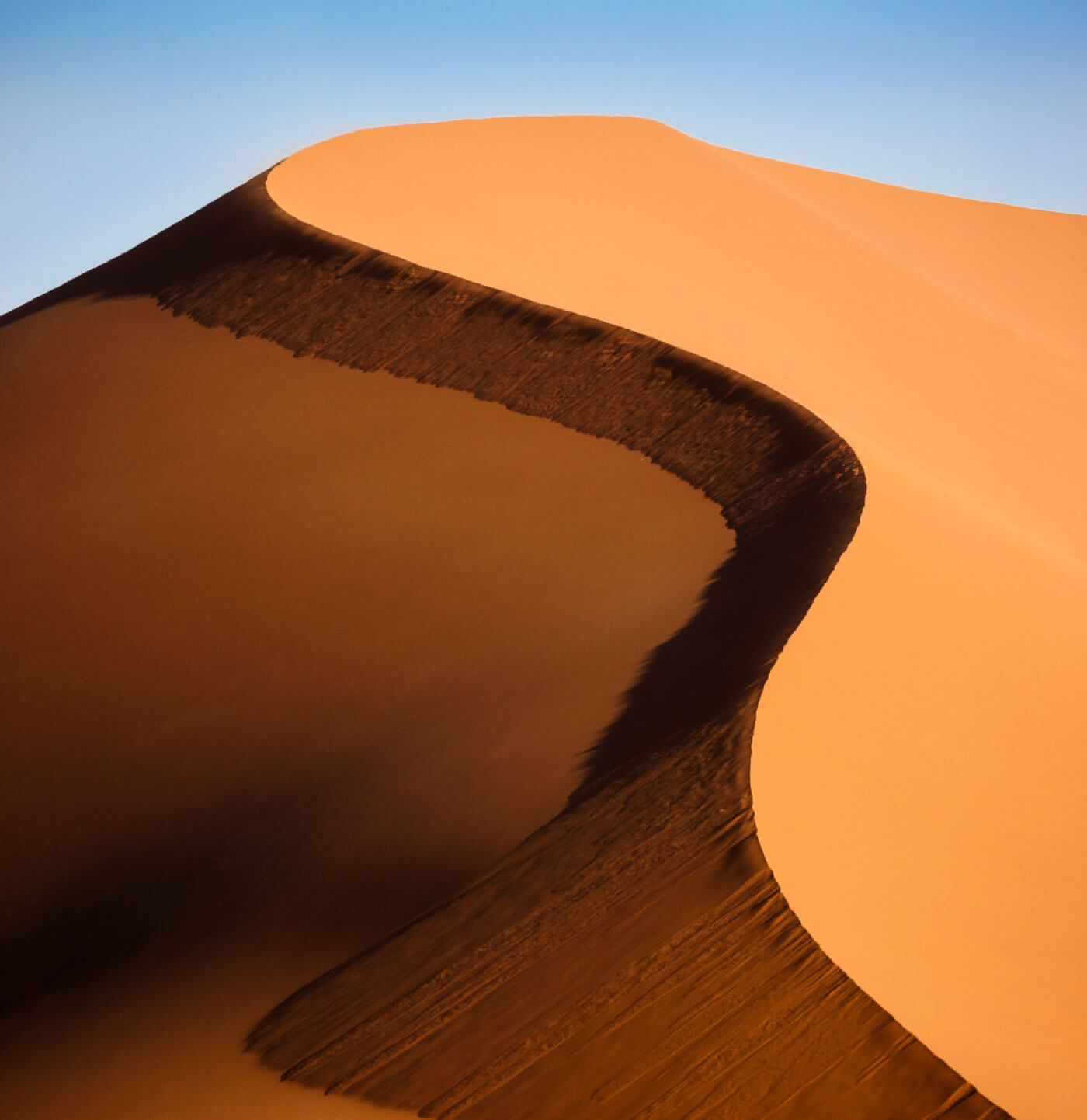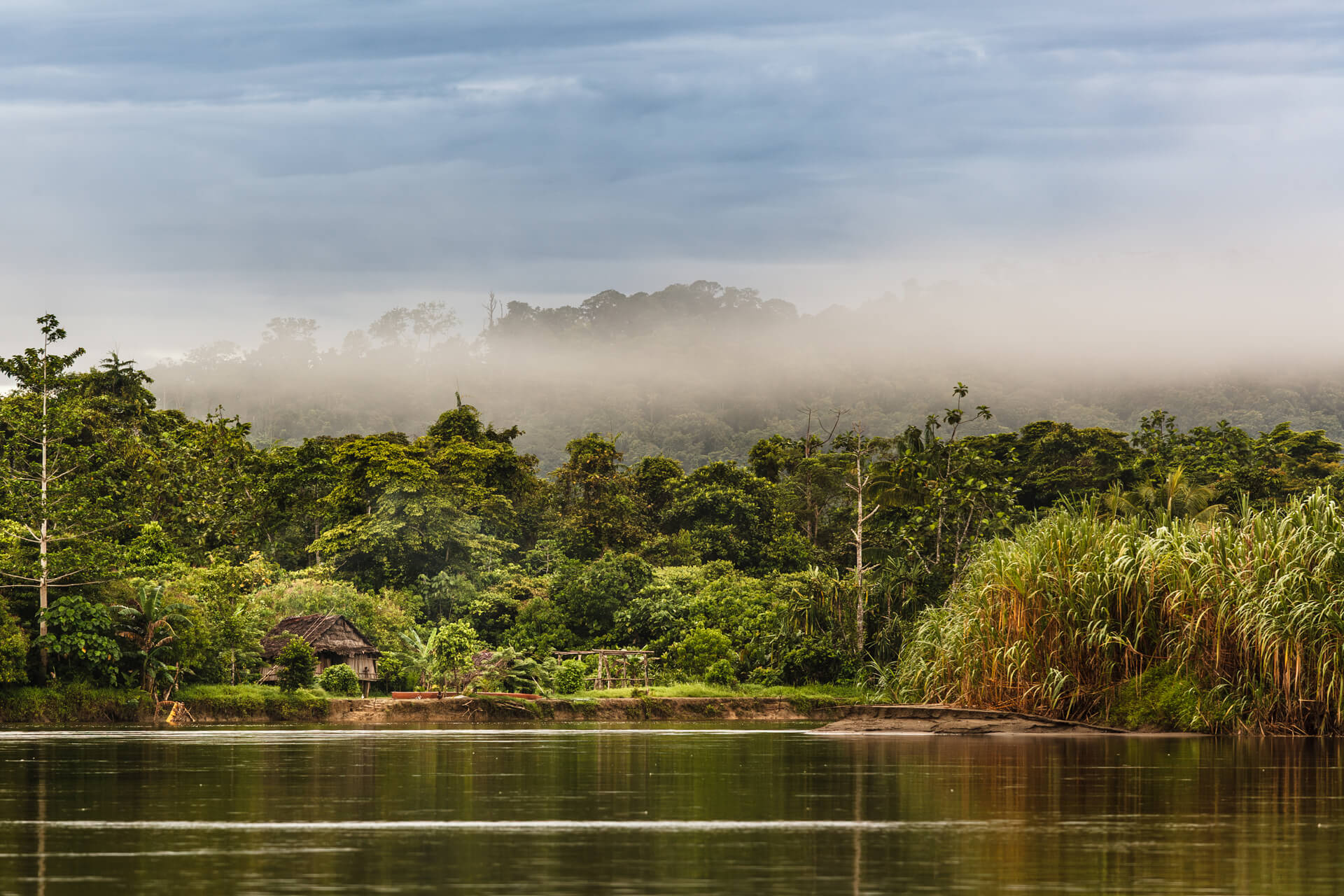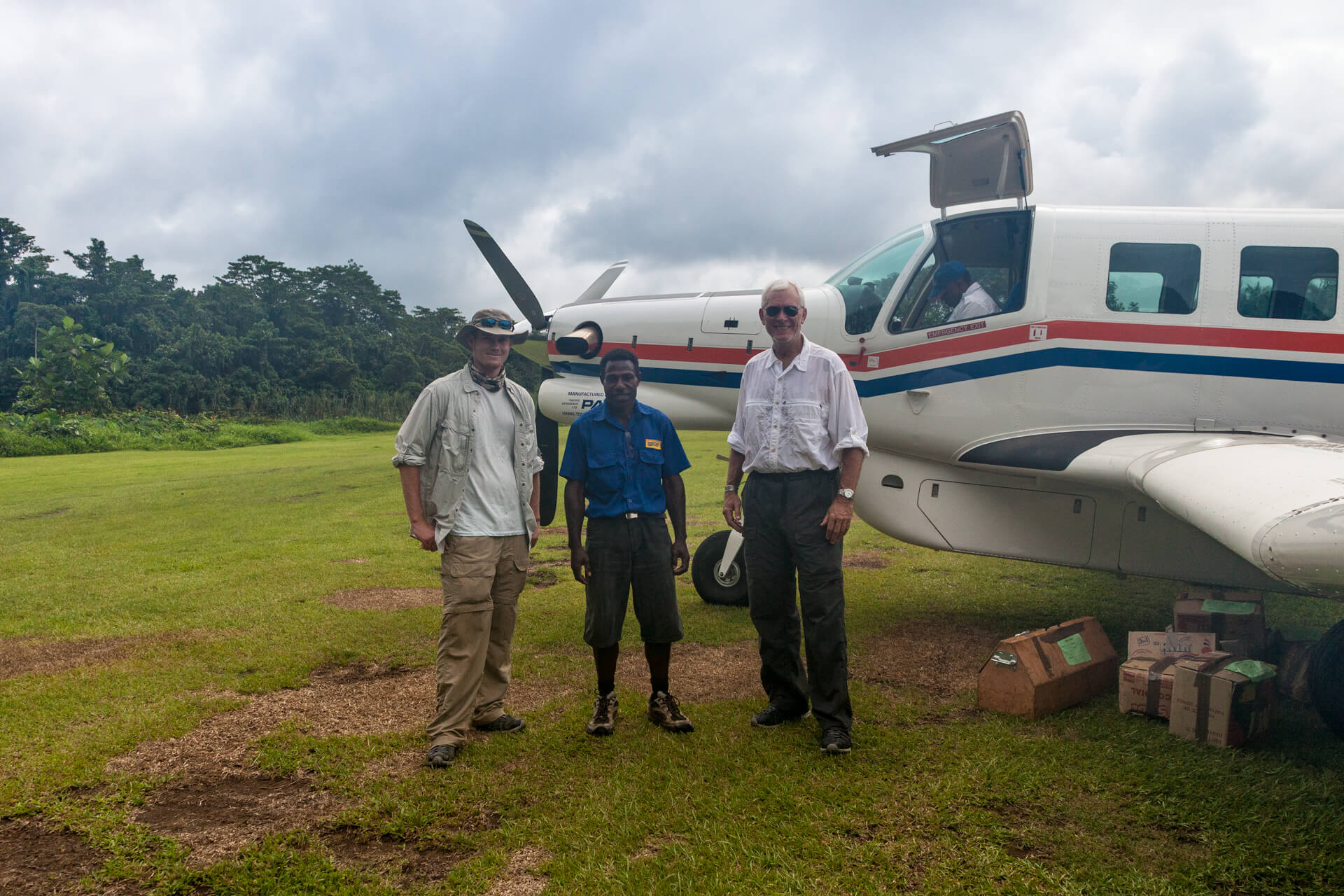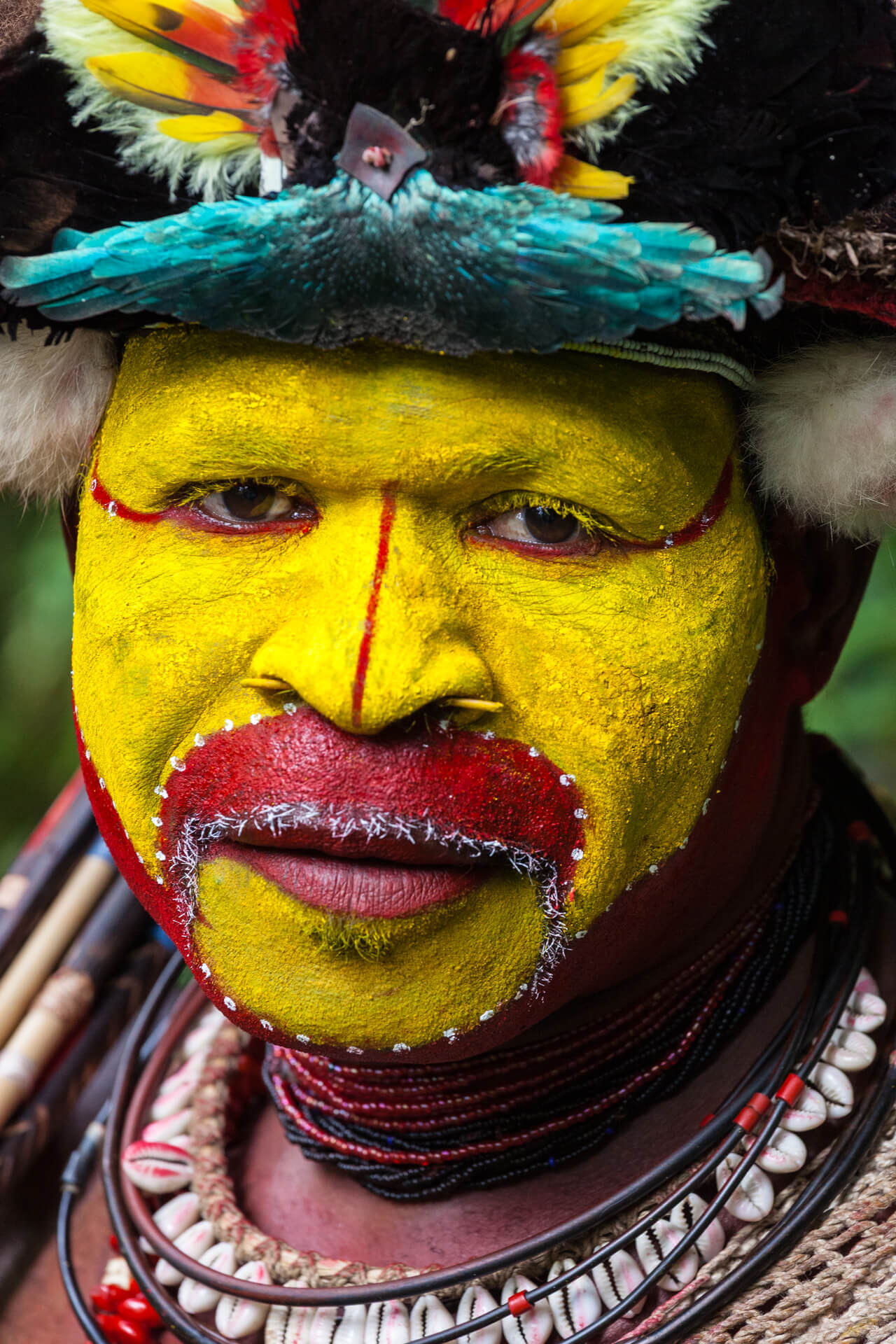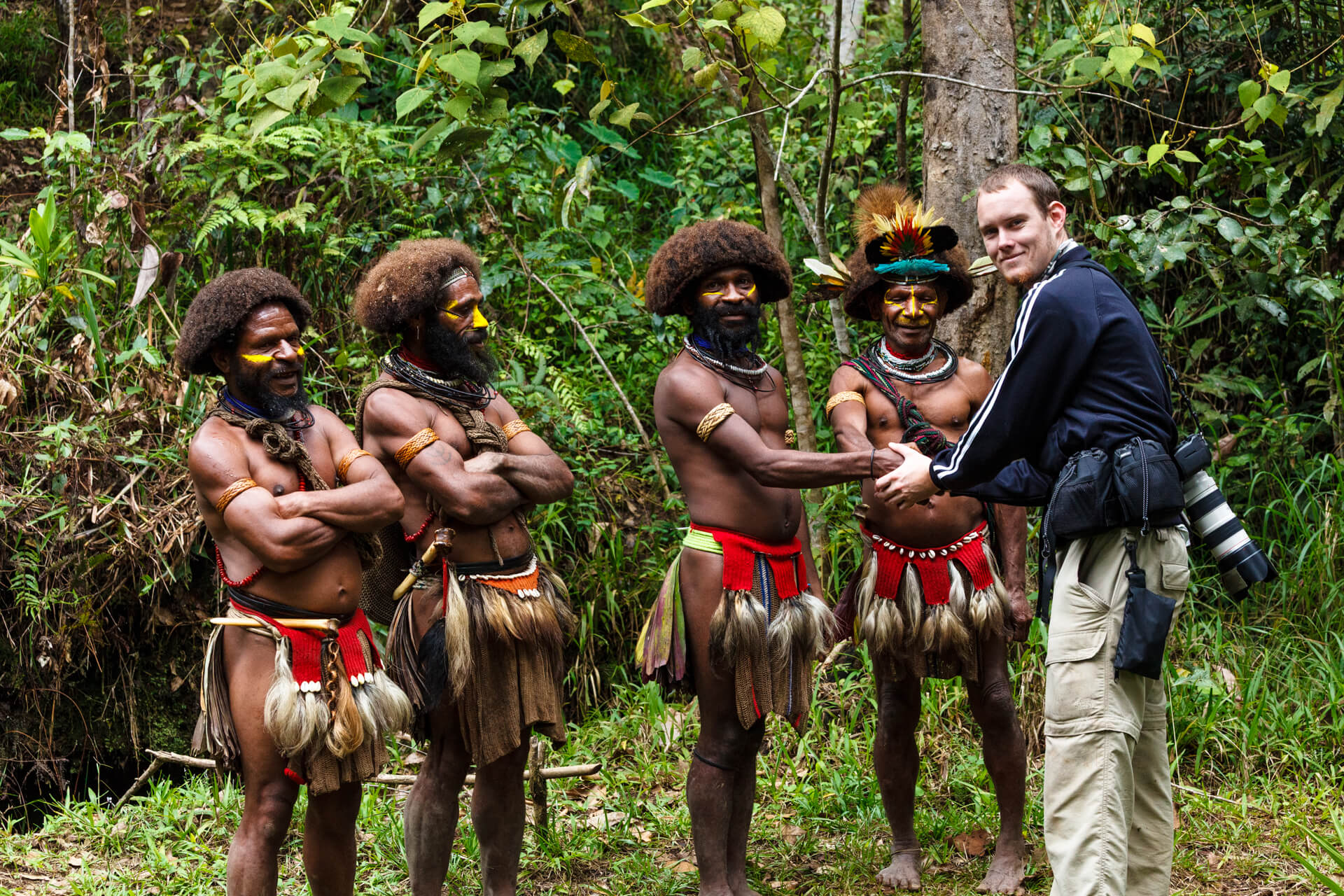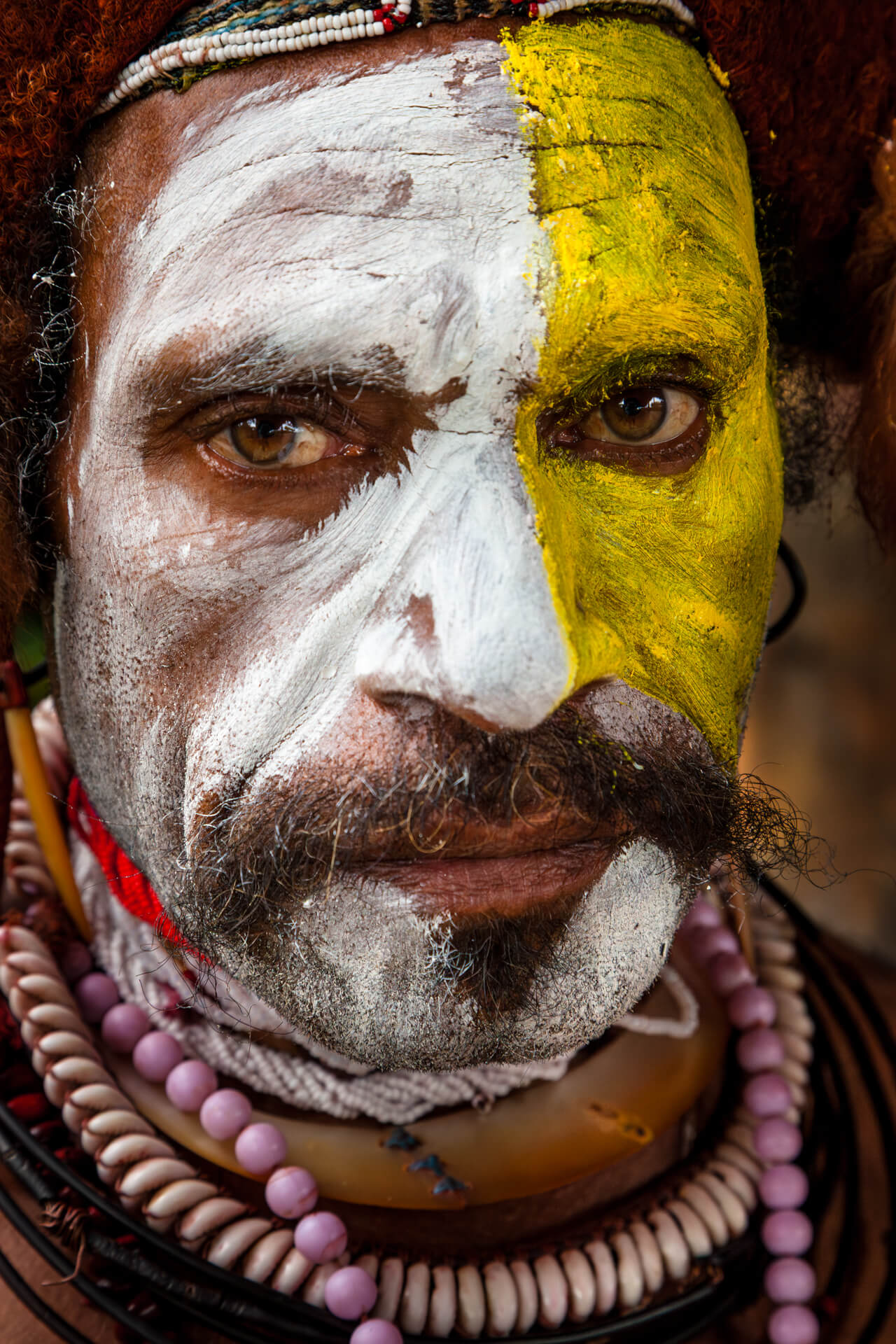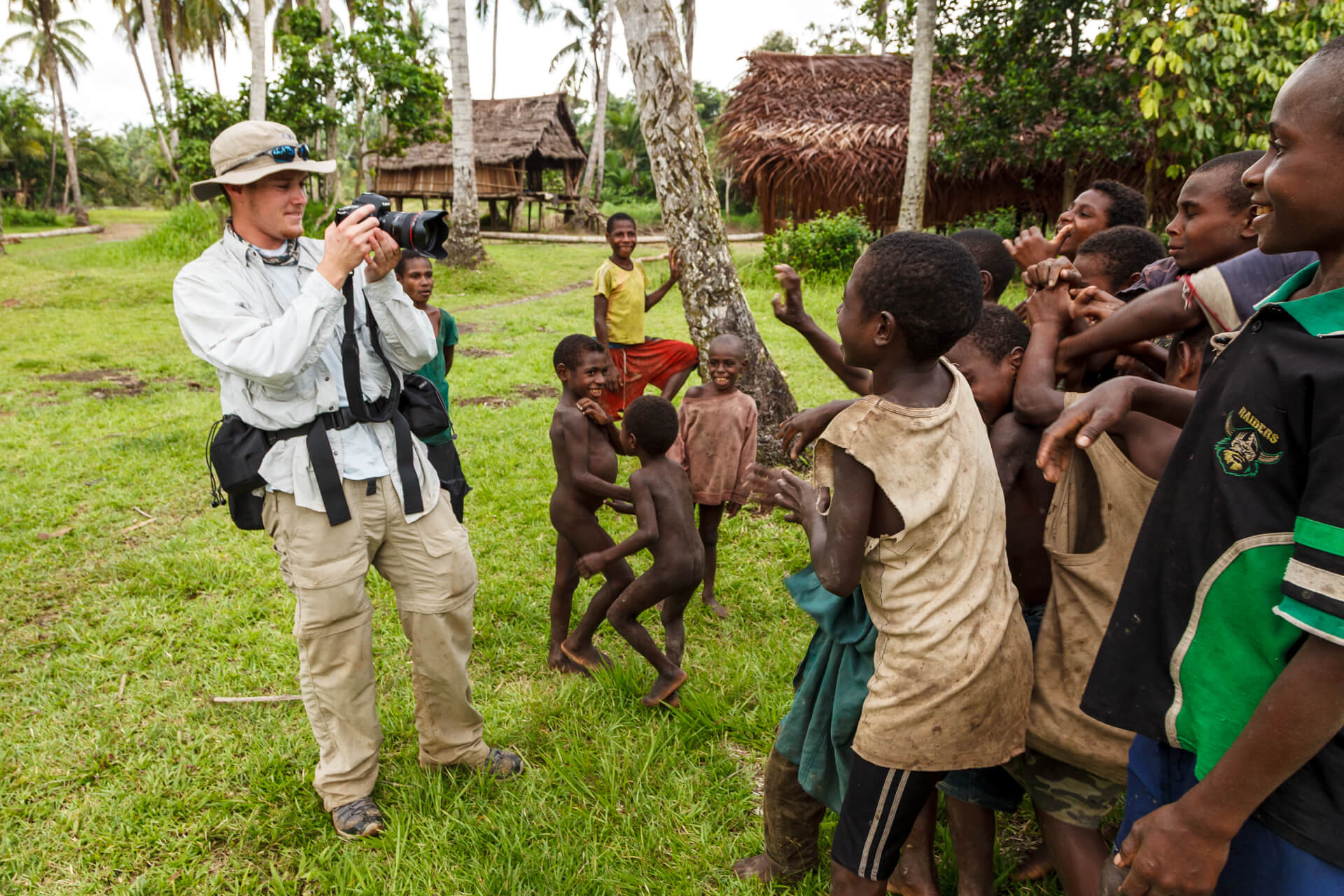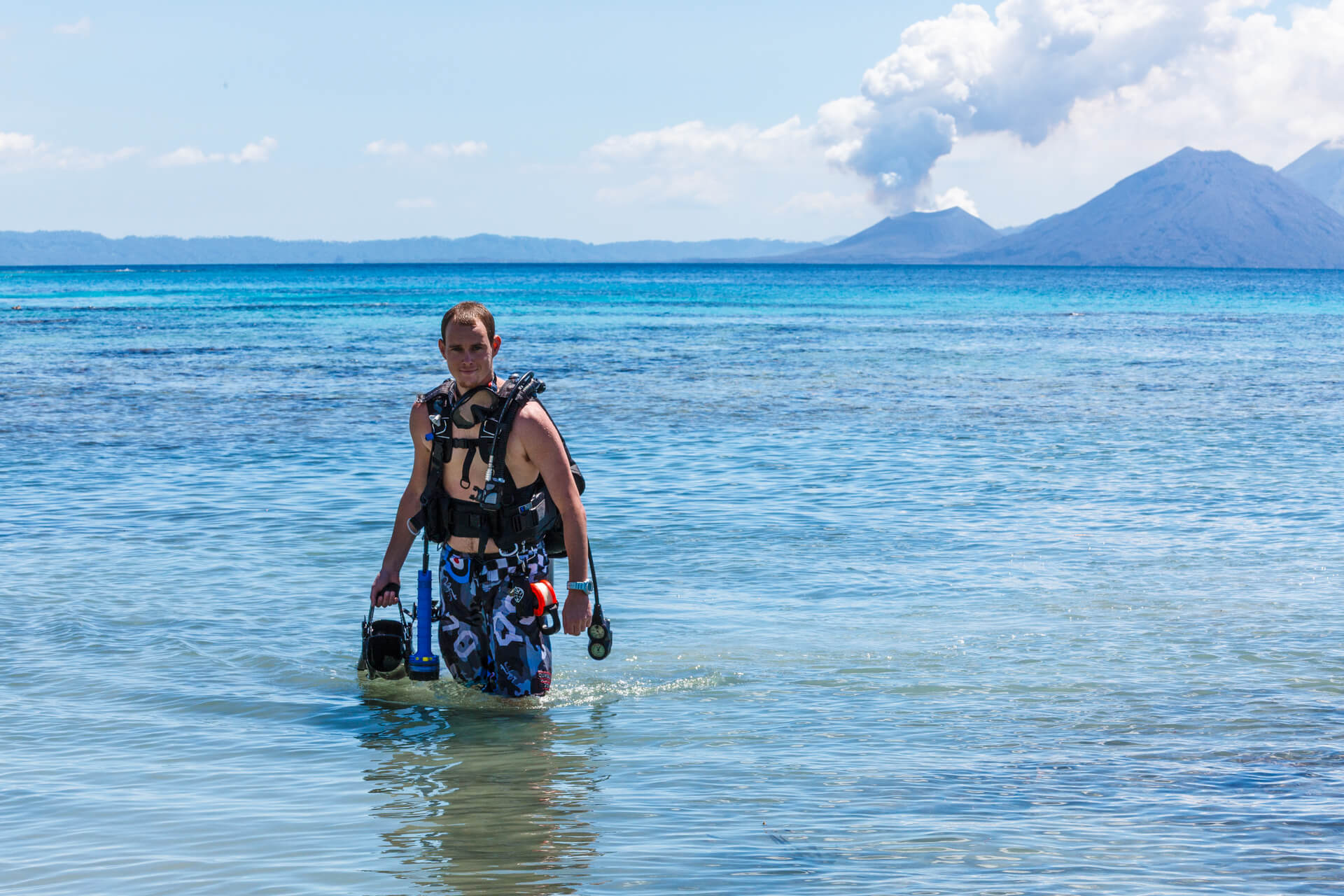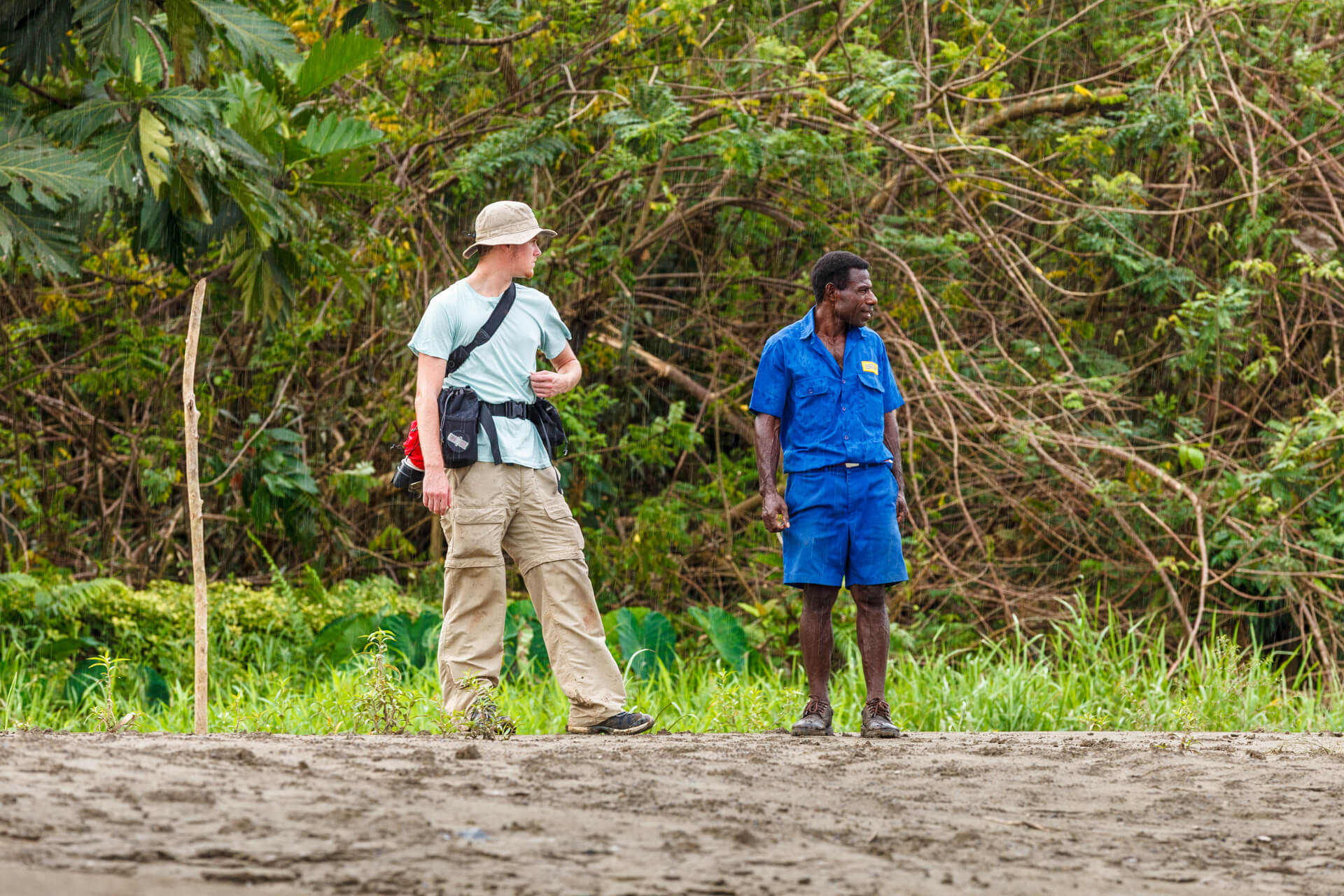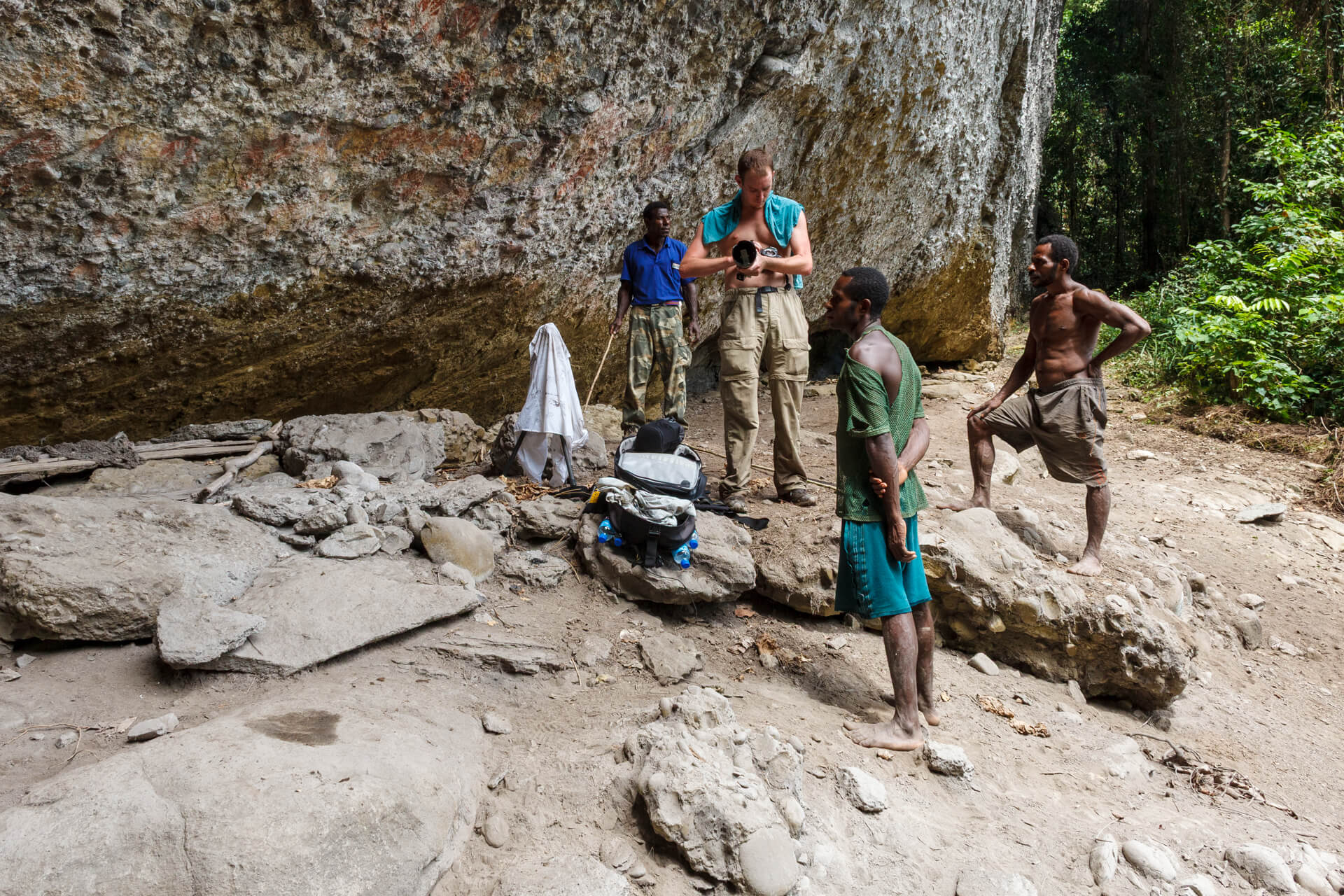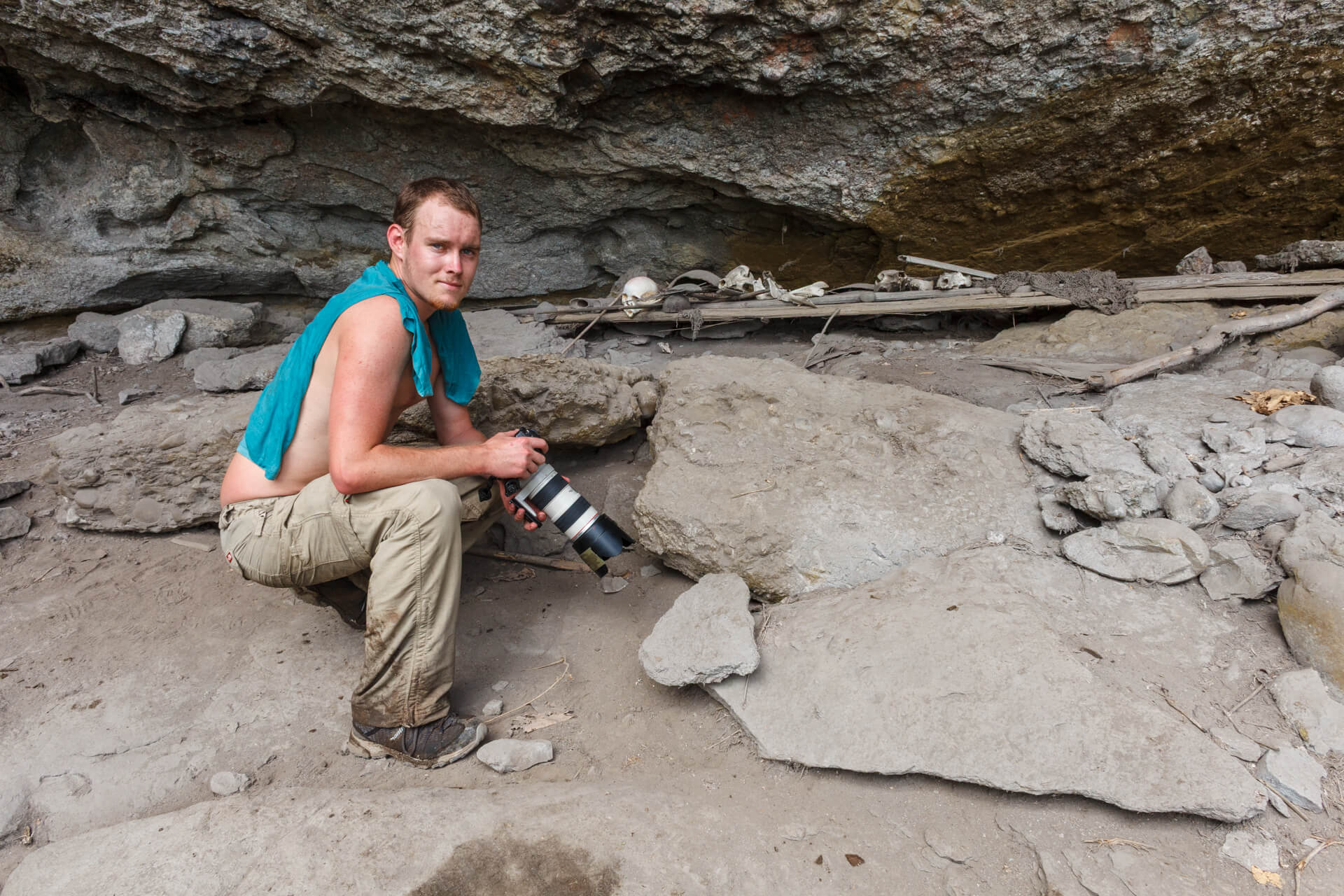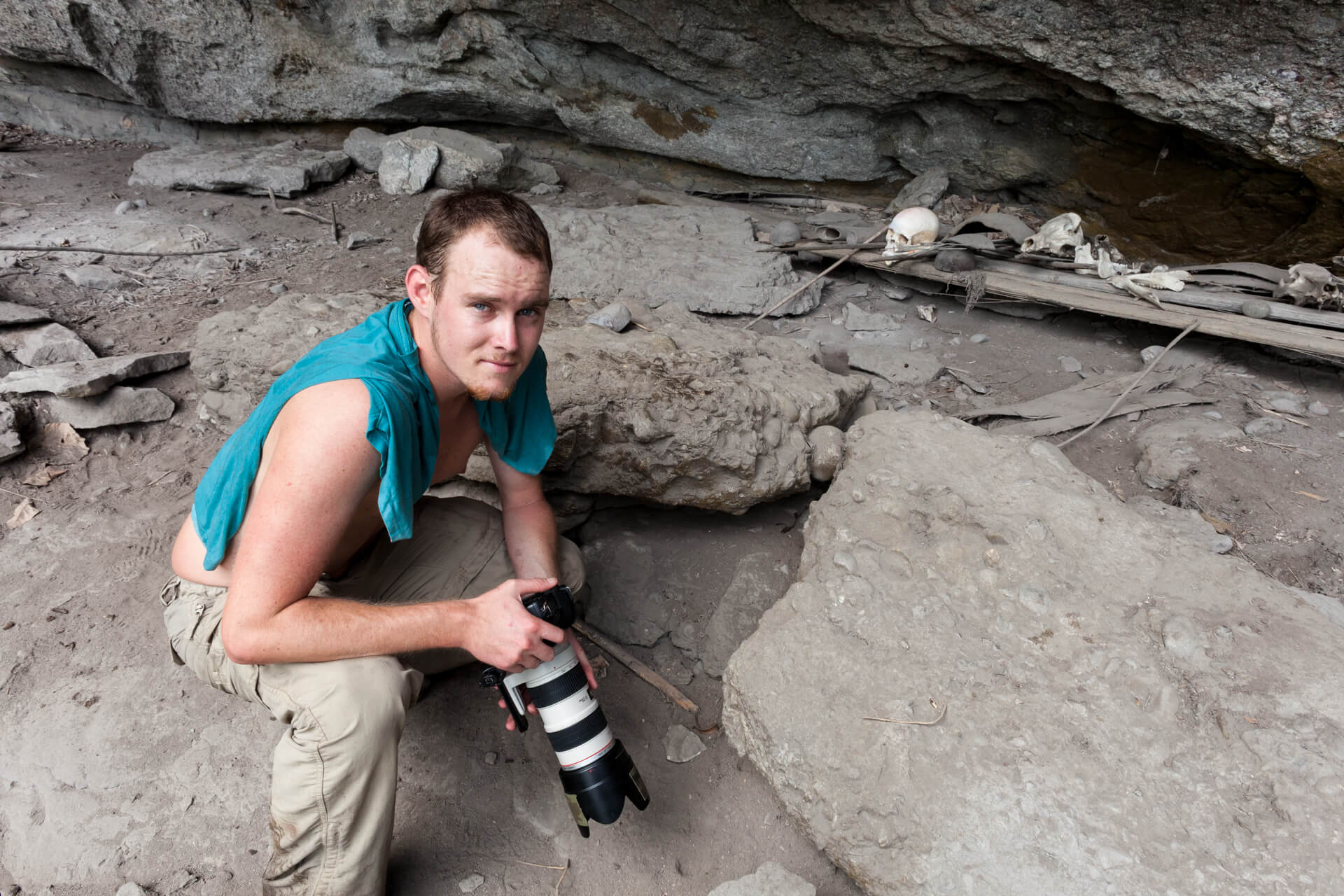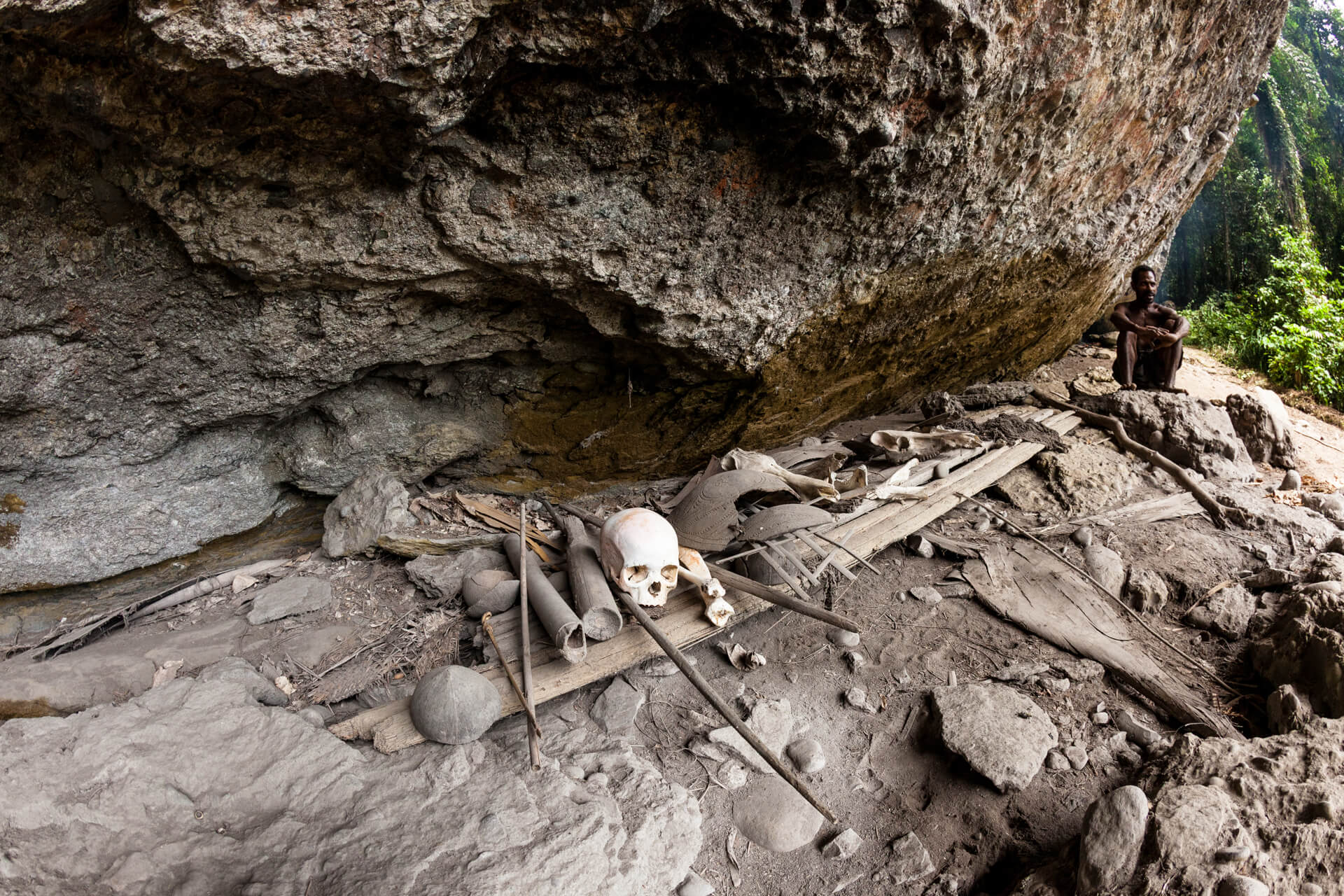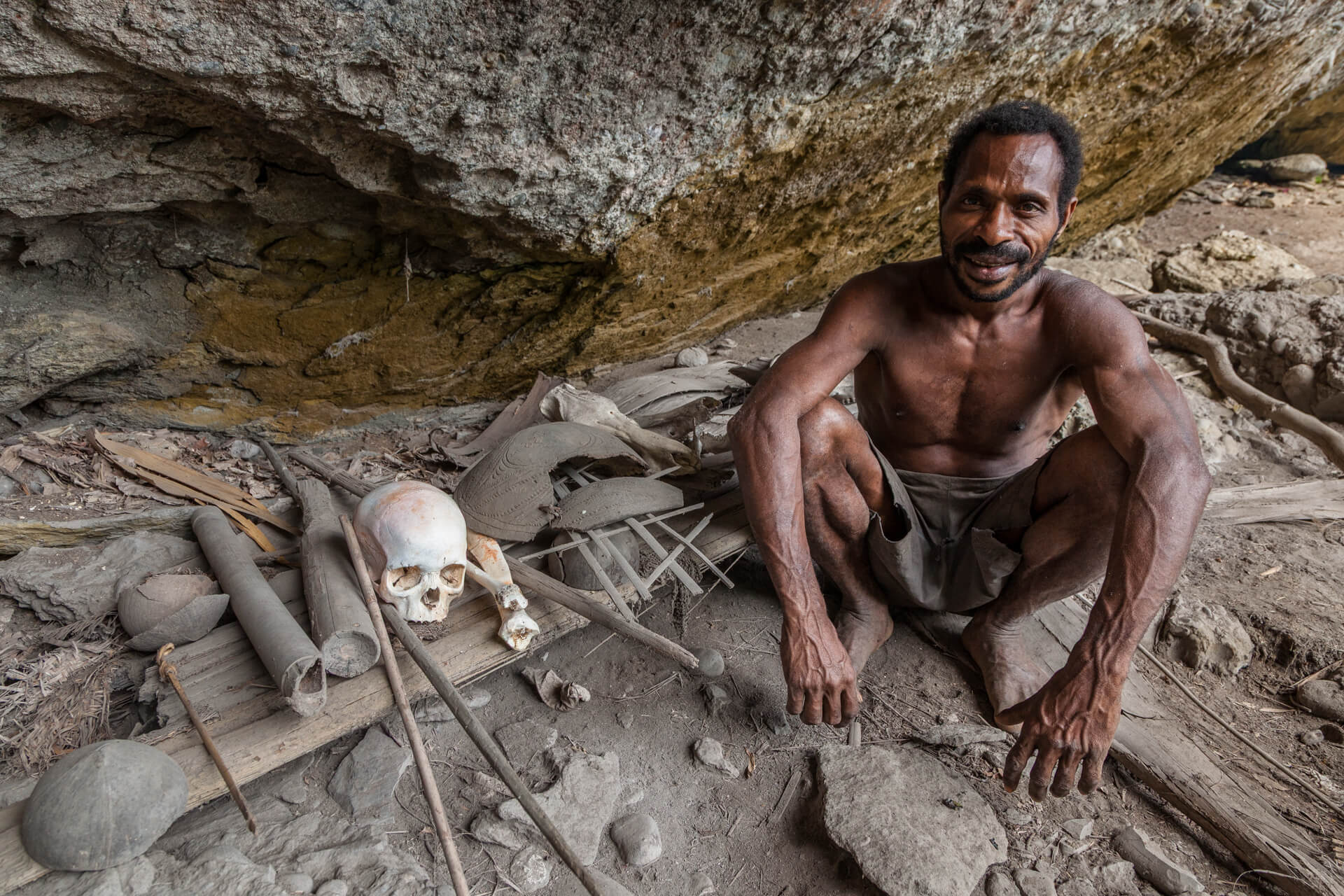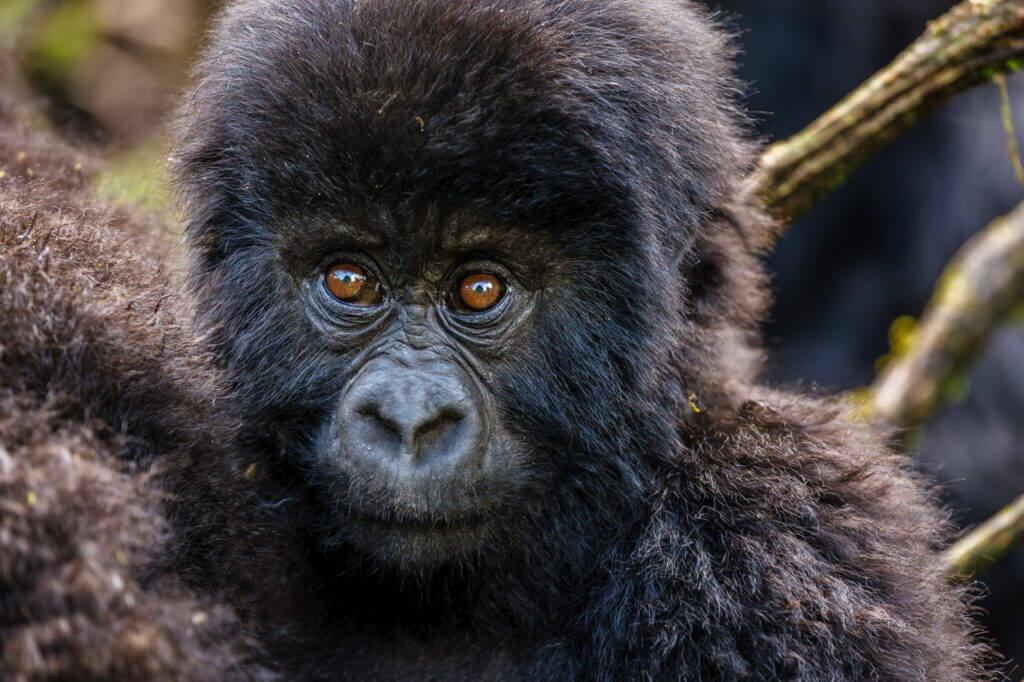Into the Heart of PNG: A Journey Between Highlands and History
We had just landed in Port Moresby on a sun-drenched afternoon, arriving by small plane from the Highlands of Papua New Guinea. The week behind us had been full of vibrant color and tradition—days spent among the Huli Wigmen, their bright yellow-painted faces and tall wigs were faces of ancestral pride. Their beauty, deeply rooted in tribal ceremony, left an indelible impression.
I was traveling with my son, Tyler, who was already dreaming ahead to the next leg of our journey: scuba diving around the sunken World War II wrecks off New Britain, far to the east in the Solomon Sea. That adventure, however, was still a few days away.
For now, we were hungry.
Just a short walk from the airport, the mid-century Airport Hotel—cool interiors, colonial charm, and a promise of decent food. As we entered the dining room, the last thing I expected was to see an old friend Chris Rainier.
Chris is a National Geographic Explorer and photographer known for his global documentation of endangered cultures and languages. He was also Ansel Adams’ last assistant—something that always lent him a certain quiet gravity. PNG is one of his specialties, and few know the country’s hidden corners better.
We joined him for lunch. Chris shared stories from recent travels—tales of tracking down ceremonial masks in remote regions, navigating thick jungle, crossing rivers in dugout canoes. Then, as we were finishing our meal, he leaned in and said, “There’s a cave—not far from a mountain village—maybe a few hours hiking. I haven’t been myself, but locals say it’s full of skulls. Old ones. Left behind by headhunters.”
He scribbled down rough directions, noting landmarks and the name of a guide who might help. That was all we needed to hear.
It took a couple of days but as soon as we could arrange the guide Chris recommended we hired a driver and we were on our way. Once we started walking on the trail I knew it was going to be a challenge. Before we could climb up the side of a mountain we first had to cross through steamy jungle with muddy paths that were wet and slippery. The heat was intense. Core temps rising.
To cross streams you could walk across tree trunks crossing or if the height was too much or the tree was too slippery you could scoot on your butt across the log. It didn’t take long for our clothes to be soaked in perspiration and muddied in places. Once we got to the base of the mountain the climbing turned to crawling as the steep slope and wet mud was impossible to climb. Grabbing for any vegetation above that could help pull ourselves along we made slow progress till we got to a small ridge that had a narrow trail traversing the hillside about half a mile from the cave.
Finally, we reached the cave. Cave is a generous word for this small hole no more than 2 meters deep. There was no collection sculls or any headhunters. Instead we saw one very clean white skull placed on a “altar” with some bones and pieces of pottery next to a local fellow who requested a dollar please? Ok, we had been had!
We made our way back down it had taken nearly four hours to get to the cave and still another 3 till we were back to our car. The last hour was incredibly wet and muggy. There had been no relief as we were back in the jungle.
At the final stream above the crossing I noticed a perfect natural pool. I had been warned of tiny fish that swim up the urethra and become imbedded and yet at that moment, cooling down was all that mattered, I jumped in and it was wonderful.
To see more from my adventures in Papua New Guinea visit the gallery.
Learn more about Chris Rainer – https://www.chrisrainier.org and https://culturalsanctuaries.org
